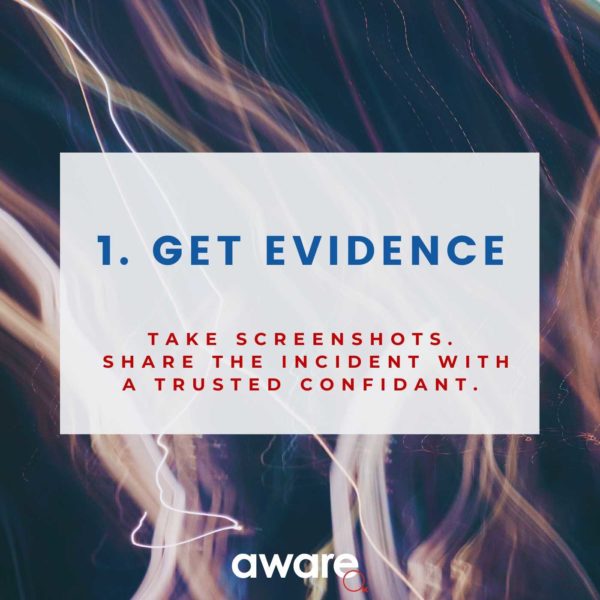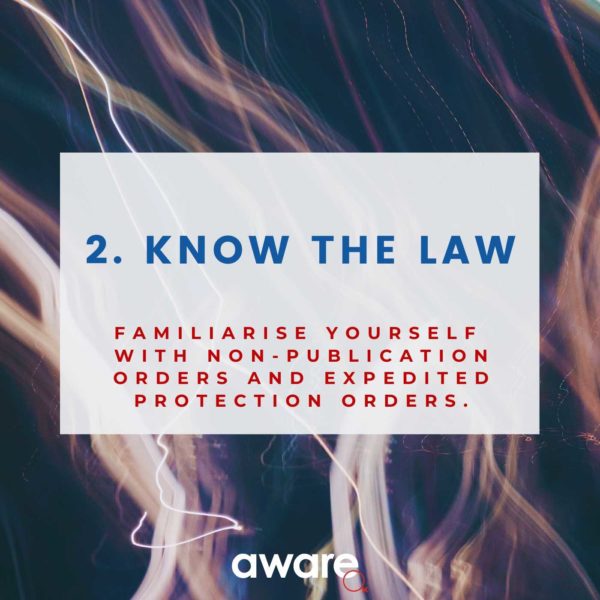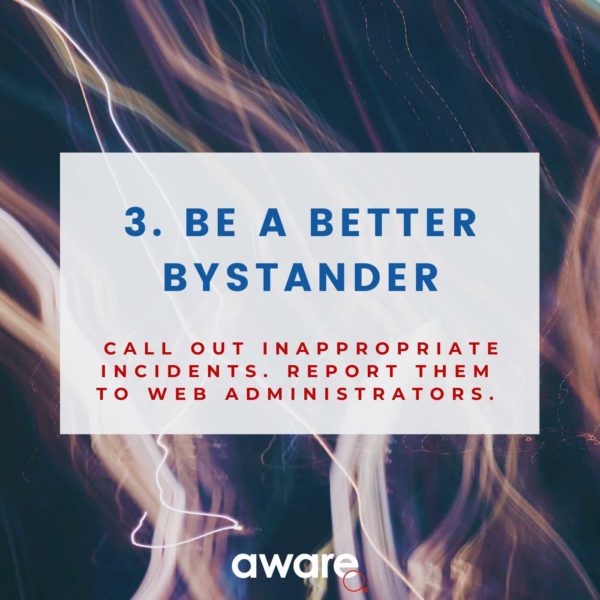-
Advocacy Theme
-
Tags
- Abortion
- Adoption
- Caregiving
- CEDAW
- Disability
- Domestic Violence
- Domestic Workers
- Harassment
- Healthcare
- Housing
- International/Regional Work
- Maintenance
- Media
- Migrant Spouses
- Migrant Workers
- Muslim Law
- National budget
- Parental Leave
- Parenthood
- Polygamy
- Population
- Race and religion
- Sexual Violence
- Sexuality Education
- Single Parents
- Social Support
- Sterilisation
- Women's Charter
Taking Ctrl, Finding Alt 2019: Top Slido questions answered
November 29th, 2019 | Gender-based Violence, News
At AWARE’s Taking Ctrl, Finding Alt 2019 event on Monday, 25 November, the audience submitted dozens of excellent questions about technology-facilitated sexual violence (TFSV) for the panel, many of which had to go unanswered that night. We’ve compiled the top six questions as upvoted by attendees at the event, and answered them to our best ability here.
To start, the basics of what to do when tech-facilitated sexual violence occurs:
Please note that the below should not constitute legal advice.
Q: How would the law address the distribution and sexualisation of non-sexual photographs of women, if at all (i.e. the xiao mei mei Telegram groups)?
Any act that causes distress, alarm or harassment would be covered under the current Protection from Harassment Act. With the new Penal Code changes—depending on how the photo has been sexualised and which parts of the body are depicted—this behaviour may be covered under Section 377BE.
Section 377BE finds a person (A) guilty of an offence who “intentionally or knowingly distributes an intimate image or recording of another person (B) without B’s consent to the distribution; and knowing or having reason to believe that the distribution will or is likely to cause B humiliation, alarm or distress.
The “intimate image or recording” in this section refers to an image or recording of B’s “genital or anal region, whether bare or covered by underwear”; “of B’s breasts if B is female, whether bare or covered by underwear”; “of B doing a private act”. It also includes “an image or recording, in any form, that has been altered to appear to show any of the above, but excludes an image so altered that no reasonable person would believe that it depicts B”.
If B (the survivor) is below 14, A shall on conviction be punished with imprisonment for a term which may extend to 5 years and shall also be liable to fine or to caning.
Q: What if we don’t know who the perpetrator is?
You can still file a police report. The police would attempt to find out who the perpetrator is. However, you would not be able to file a protection order against an unknown person.
You would still be able to apply for a non-publication order, which would be served to websites. Again, though, this would be limited by jurisdiction.
Q: Are the laws currently in place sufficient or effective in deterring acts of IBSA? Are there any gaps, and how can these be addressed?
This is a great question. There is not enough research right now about how effective our current laws are. We would welcome research that examines the effectiveness before and after the recent Penal Code changes.
Q: Priscilla Chia mentioned new legislation around protection orders, e.g. expedited orders. Are protection orders effective in stopping violence? Is there data on this?
Expedited protection orders are not a new thing in Singapore. However, recent POHA amendments do make court processes more efficient, which should speed things up significantly.
In our Sexual Assault Care Centre‘s experience, in some cases where protection orders were applied, these orders have helped to stop the sexual violence to date. However, in other domestic violence cases seen by AWARE’s Women’s Care Centre, we have seen perpetrators breach their protection orders.
Ultimately, the effectiveness of protection orders in Singapore is an area that requires more research.
Q: What can a bystander do if the person being sexually harassed (and experiencing obvious distress) doesn’t want to report it for fear of embarrassment?
A good bystander will validate the feelings and experiences of the survivor without judgment or prescription of any one course of action. Filing an official report is, of course, one way for a survivor to seek justice and closure after tech-facilitated sexual violence. However, every survivor has the right to weigh the pros and cons of making a report, including the practical risks that might follow: e.g. retaliation, public shaming and/or negative attention. Ultimately, she should prioritise her physical and emotional well-being, and do what she needs to do for her recovery.
In SACC’s Sexual Assault First Responder Training, we share four tenets of effective support for when someone discloses an experience of sexual violence to you:
“It’s not your fault.”
“It’s your choice how you want to move forward.”
“It’s your experience, not anybody else’s.”
“I’m here to support you.”
Q: What are the biggest problems in boys’ education that contribute to a culture of TFSV? Besides legislation, does AWARE believe that it is possible to educate people against committing acts of IBSA?
Surveys have shown that young people (of all genders) in Singapore suffer from a dearth of comprehensive information about sex and relationships, possibly due to a lack of comprehensive sexuality education in schools. A strong sex education curriculum would cover not only physical health, but emotional well-being, empathy and respect for others, healthy relationships and, particularly, consent—what it looks like, what it doesn’t look like, and how to negotiate it in a real-life scenario. We believe that this is the best, most “upstream” way to prevent young people from turning to sexual violence of any kind.
Along with our ongoing Aim for Zero campaign, which combats sexual violence by increasing awareness and conversation, AWARE has a programme called Birds & Bees. Birds & Bees is a workshop for parents that enables them to impart comprehensive sexuality education to their children. It provides simple, easy-to-use tips for communicating values about sex and relationships, and building more trust and openness on these subjects with youth. Email publiceducation@aware.org.sg to secure a spot in our next workshop.






